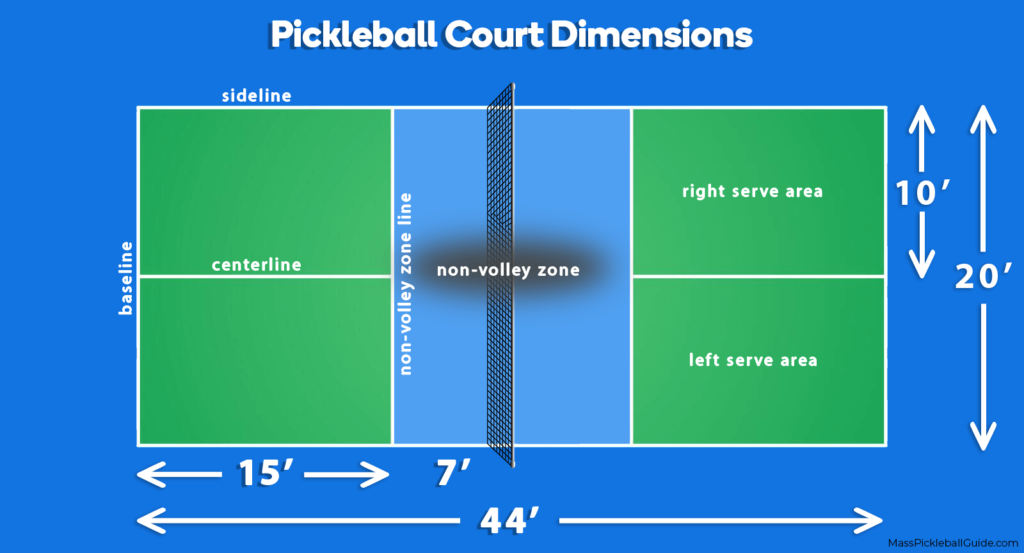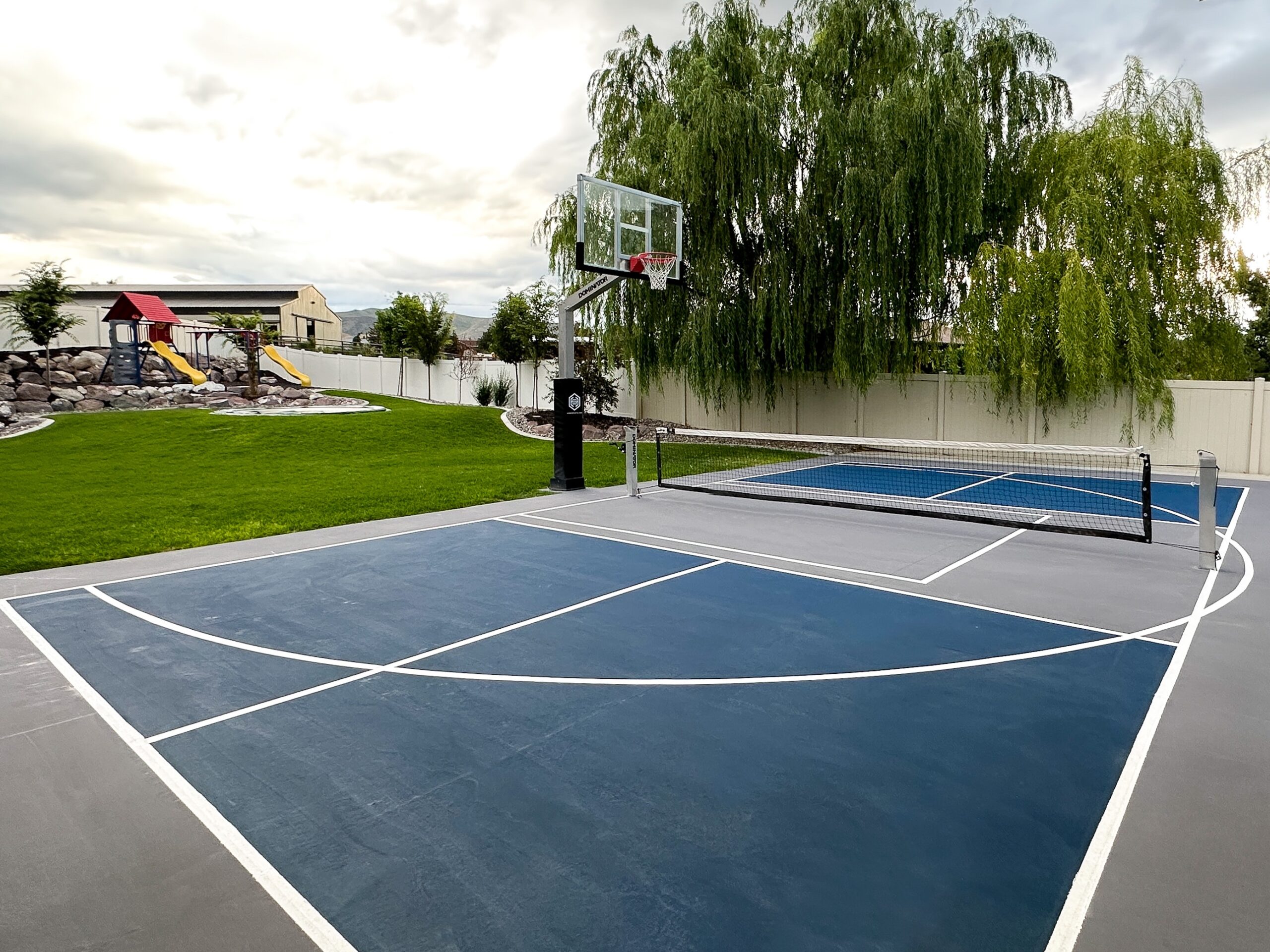Usual Mistakes to Avoid in Your Pickleball Court Construction Process
Usual Mistakes to Avoid in Your Pickleball Court Construction Process
Blog Article
Boost Local Engagement With Community-Driven Pickleball Court Projects
The emergence of community-driven pickleball court tasks provides a distinct opportunity to promote local interaction and enhance area connections. The actual inquiry stays: just how can these grassroots initiatives be tactically implemented to make certain sustainability and inclusivity in diverse areas?
Significance of Neighborhood Involvement
Area interaction is an important component in the successful advancement of pickleball court projects, as it cultivates a feeling of possession and cumulative responsibility amongst locals. When area members are actively included in the planning and application phases, they are a lot more likely to support for the job's lasting success. Involving stakeholders such as local players, households, and entertainment teams makes certain that the centers meet the diverse requirements and preferences of the area.
In addition, neighborhood involvement cultivates an encouraging atmosphere where locals really feel encouraged to contribute their sources and concepts. Pickleball court construction. This collective approach can result in ingenious options that enhance the layout and performance of the courts, making them a lot more enticing to a larger target market. In addition, involving locals in decision-making processes can reinforce social connections, promoting inclusivity and unity within the area
The visibility of neighborhood assistance for a pickleball project can additionally play a critical duty in safeguarding financing and authorization from local authorities. By demonstrating a common commitment to entertainment development, communities can effectively advocate for resources and policy changes that favor the facility of pickleball courts, inevitably enriching the regional society and entertainment landscape.
Steps to Start a Task
Launching a pickleball court project calls for an organized technique that develops on the structure of area interaction established in previous conversations. The initial step is to put together a task board consisting of regional stakeholders, enthusiasts, and agents from relevant companies. This varied team makes certain that multiple perspectives are taken into consideration.
Following, conduct a needs assessment within the neighborhood. Studies, focus groups, and public meetings can be efficient in evaluating passion and gathering input on potential court areas, desired facilities, and organizing choices. Following this, develop a project strategy laying out responsibilities, purposes, and timelines.
When the strategy remains in area, involve with local authorities to comprehend zoning laws and any type of necessary permits. Connecting transparently with the community throughout this procedure is critical, as it fosters depend on and motivates further engagement.
In addition, organizing neighborhood events can aid keep momentum and enthusiasm. These occasions can act as platforms for further discussion and assistance to reinforce neighborhood ties. Lastly, paper every step taken and keep in-depth records, as this will certainly be helpful for future phases of the project, including funding and resource purchase.
Funding and Resources Available
Protecting funding and sources for a pickleball court task is usually a critical step that can figure out the job's feasibility and success. Numerous avenues exist for getting economic support, varying from public financing to personal sponsorships. City government grants, frequently intended at promoting neighborhood wellness and recreation, can give significant sponsorship for such efforts.
Along with this website federal government resources, not-for-profit companies and structures often offer grants especially for sports and community growth projects. Involving regional organizations as sponsors can likewise be a worthwhile method; several business aspire to invest in neighborhood campaigns that enhance their business social responsibility profile.
Crowdfunding platforms have actually become a practical choice for grassroots fundraising, enabling neighborhood members to add directly to the project. This approach not just elevates funds however additionally cultivates a feeling of possession among participants.
Design and Preparation Factors To Consider
Efficient style and preparation are fundamental components of any kind of successful pickleball court task complying with the procurement of funding and sources. straight from the source A thorough evaluation of the recommended area is important; this consists of assessing accessibility, proximity to existing area amenities, and the possibility for presence and engagement.
The design of the court have to stick to main dimension specifications while considering the bordering setting. Integrating attributes such as seating, color frameworks, and suitable illumination can dramatically boost player experience and viewer enjoyment. Products picked for the court surface must focus on durability and safety and security, with alternatives like acrylic or asphalt offering ideal performance.
Including area participants in the style process fosters a sense of possession and makes certain that the facility satisfies local requirements - Pickleball court construction. This can be attained through public consultations and studies, enabling stakeholders to share their choices and concerns
Sustainability should additionally be a concern; including environmentally friendly products and techniques can add to long-lasting viability. Finally, creating an upkeep strategy to make certain the court continues to be in outstanding problem will support continuous neighborhood interaction and involvement in pickleball tasks.

Success Stories and Case Researches
Highlighting the transformative effect of community-driven campaigns, numerous success tales highlight just how collective efforts have led to the development of lively pickleball courts throughout various More Bonuses regions. One significant example is the campaign in a town in Florida, where locals grouped with each other to transform an underutilized tennis court into a committed pickleball facility. With fundraising events and partnerships with neighborhood businesses, the neighborhood elevated adequate funds to mount new nets, resurfacing, and lines, ultimately fostering a vibrant hub for local gamers.
Similarly, in a suv area of California, a grassroots movement arised to create pickleball courts in a regional park. The project not just involved volunteers for construction but additionally consisted of workshops to engage community participants in the sport. As a result, the courts ended up being a centerpiece for social interaction and fitness, bring in players of any ages.
These study exhibit just how community-driven jobs can boost local involvement, advertise physical task, and strengthen social bonds. By leveraging collective resources and enthusiasm, areas can efficiently develop and sustain pickleball facilities that serve varied populaces and cultivate a sense of belonging.

Conclusion
To conclude, community-driven pickleball court tasks work as crucial tools for improving neighborhood interaction and cultivating a feeling of belonging amongst homeowners. By focusing on stakeholder involvement throughout the preparation and implementation phases, these efforts can efficiently attend to diverse area demands. In addition, leveraging available resources and analyzing successful study can give valuable understandings for future tasks. Eventually, such efforts add to the improvement of public areas right into vibrant centers of fitness and social interaction, reinforcing area connections.
The introduction of community-driven pickleball court jobs provides an one-of-a-kind opportunity to foster local engagement and reinforce neighborhood ties.Neighborhood engagement is a crucial aspect in the effective development of pickleball court jobs, as it fosters a sense of ownership and cumulative duty among locals. When area participants are proactively entailed in the planning and application stages, they are more most likely to promote for the project's long-term success.Launching a pickleball court task needs an organized approach that builds on the foundation of area engagement established in previous conversations. The job not just engaged volunteers for construction but additionally included workshops to engage area members in the sport.
Report this page